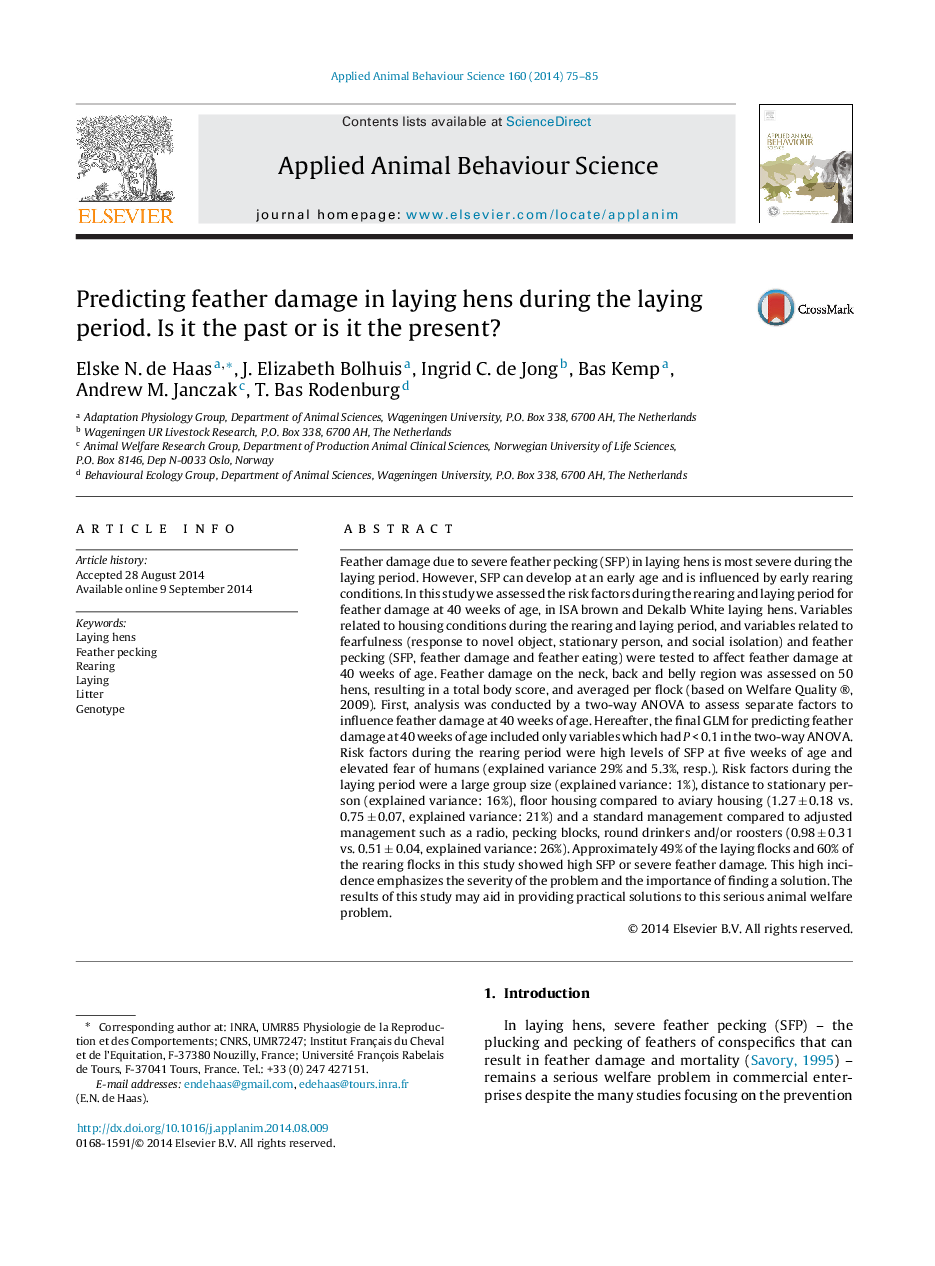| کد مقاله | کد نشریه | سال انتشار | مقاله انگلیسی | نسخه تمام متن |
|---|---|---|---|---|
| 4522533 | 1625346 | 2014 | 11 صفحه PDF | دانلود رایگان |
• Severe feather pecking at five weeks of age was related to high levels of feather damage at 40 weeks of age.
• Feather damage was more severe in floor compared to aviary housing.
• An adjusted management reduced feather damage compared to standard management.
• A large group size was associated with high feather damage.
• Fear of humans at rearing and lay was associated with high feather damage.
Feather damage due to severe feather pecking (SFP) in laying hens is most severe during the laying period. However, SFP can develop at an early age and is influenced by early rearing conditions. In this study we assessed the risk factors during the rearing and laying period for feather damage at 40 weeks of age, in ISA brown and Dekalb White laying hens. Variables related to housing conditions during the rearing and laying period, and variables related to fearfulness (response to novel object, stationary person, and social isolation) and feather pecking (SFP, feather damage and feather eating) were tested to affect feather damage at 40 weeks of age. Feather damage on the neck, back and belly region was assessed on 50 hens, resulting in a total body score, and averaged per flock (based on Welfare Quality ®, 2009). First, analysis was conducted by a two-way ANOVA to assess separate factors to influence feather damage at 40 weeks of age. Hereafter, the final GLM for predicting feather damage at 40 weeks of age included only variables which had P < 0.1 in the two-way ANOVA. Risk factors during the rearing period were high levels of SFP at five weeks of age and elevated fear of humans (explained variance 29% and 5.3%, resp.). Risk factors during the laying period were a large group size (explained variance: 1%), distance to stationary person (explained variance: 16%), floor housing compared to aviary housing (1.27 ± 0.18 vs. 0.75 ± 0.07, explained variance: 21%) and a standard management compared to adjusted management such as a radio, pecking blocks, round drinkers and/or roosters (0.98 ± 0.31 vs. 0.51 ± 0.04, explained variance: 26%). Approximately 49% of the laying flocks and 60% of the rearing flocks in this study showed high SFP or severe feather damage. This high incidence emphasizes the severity of the problem and the importance of finding a solution. The results of this study may aid in providing practical solutions to this serious animal welfare problem.
Journal: Applied Animal Behaviour Science - Volume 160, November 2014, Pages 75–85
